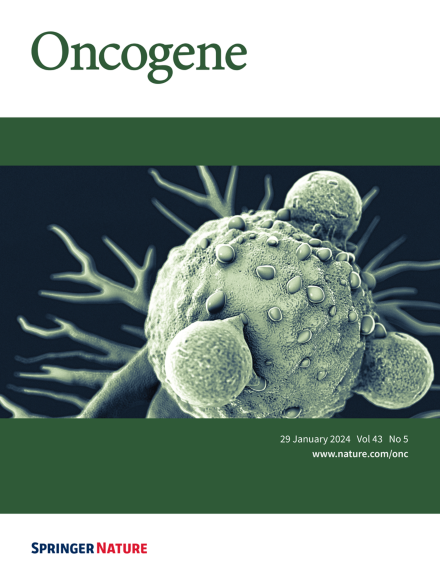Enhancing low-dose radiotherapy efficacy with PARP inhibitors via FBL-mediated oxidative stress response in colorectal cancer
IF 6.9
1区 医学
Q1 BIOCHEMISTRY & MOLECULAR BIOLOGY
引用次数: 0
Abstract
The effectiveness of radiotherapy in colorectal cancer (CRC) relies on its ability to induce cell death via the generation of reactive oxygen species (ROS). However, genes responsible for mitigating oxidative stress can impede radiotherapy’s efficacy. In this study, we elucidate a significant association between the nucleolar protein Fibrillarin (FBL) and the oxidative stress response in CRC tumors. Our findings reveal elevated expression of FBL in colorectal cancer, which positively correlates with oxidative stress levels. Mechanistically, FBL demonstrates direct accumulation at DNA damage sites under the regulation of PARP1. Specifically, the N-terminal GAR domain of FBL is susceptible to PARylation by PARP1, enabling FBL to recognize PARylated proteins. The accumulation of damaged FBL plays a pivotal role in facilitating short-patched base excision repair by recruiting Ligase III and disassociating PCNA and FEN1. Moreover, tumors with heightened FBL expression exhibit reduced DNA damage levels but increased sensitivity to combined low-dose radiotherapy and olaparib treatment. This underscores the potential of leveraging PARP inhibitors to augment radiotherapy sensitivity in CRC cases characterized by elevated FBL expression, offering a promising therapeutic avenue.

通过FBL介导的氧化应激反应提高PARP抑制剂在结直肠癌中的低剂量放疗疗效
放疗对结直肠癌(CRC)的疗效取决于其通过产生活性氧(ROS)诱导细胞死亡的能力。然而,负责减轻氧化应激的基因会阻碍放疗的疗效。在这项研究中,我们阐明了细胞核蛋白纤维蛋白(FBL)与癌症肿瘤氧化应激反应之间的重要关联。我们的研究结果表明,FBL在结直肠癌中的表达升高,与氧化应激水平呈正相关。从机理上讲,FBL在PARP1的调控下直接在DNA损伤位点聚集。具体来说,FBL 的 N 端 GAR 结构域易受 PARP1 的 PAR 化作用,从而使 FBL 能够识别 PAR 化蛋白。受损 FBL 的积累通过招募连接酶 III 和分解 PCNA 和 FEN1,在促进短斑块碱基切除修复中发挥了关键作用。此外,FBL表达增高的肿瘤DNA损伤水平降低,但对低剂量放疗和奥拉帕利联合治疗的敏感性增加。这凸显了利用PARP抑制剂提高FBL表达增高的CRC病例放疗敏感性的潜力,为治疗提供了一条前景广阔的途径。
本文章由计算机程序翻译,如有差异,请以英文原文为准。
求助全文
约1分钟内获得全文
求助全文
来源期刊

Oncogene
医学-生化与分子生物学
CiteScore
15.30
自引率
1.20%
发文量
404
审稿时长
1 months
期刊介绍:
Oncogene is dedicated to advancing our understanding of cancer processes through the publication of exceptional research. The journal seeks to disseminate work that challenges conventional theories and contributes to establishing new paradigms in the etio-pathogenesis, diagnosis, treatment, or prevention of cancers. Emphasis is placed on research shedding light on processes driving metastatic spread and providing crucial insights into cancer biology beyond existing knowledge.
Areas covered include the cellular and molecular biology of cancer, resistance to cancer therapies, and the development of improved approaches to enhance survival. Oncogene spans the spectrum of cancer biology, from fundamental and theoretical work to translational, applied, and clinical research, including early and late Phase clinical trials, particularly those with biologic and translational endpoints.
 求助内容:
求助内容: 应助结果提醒方式:
应助结果提醒方式:


